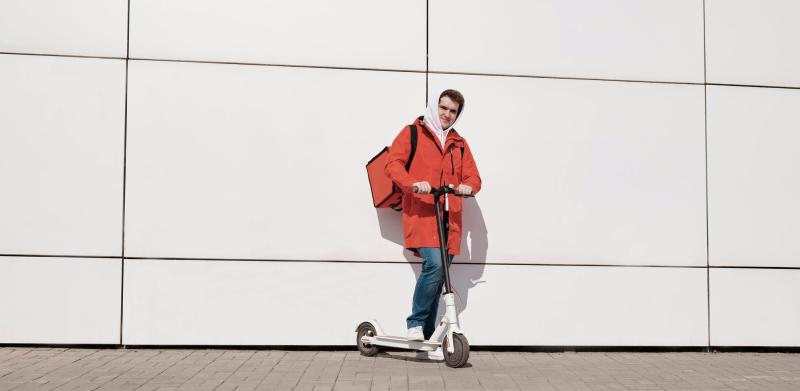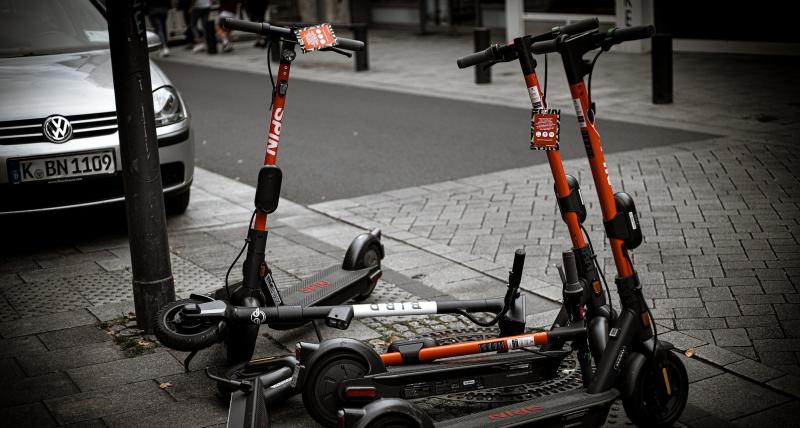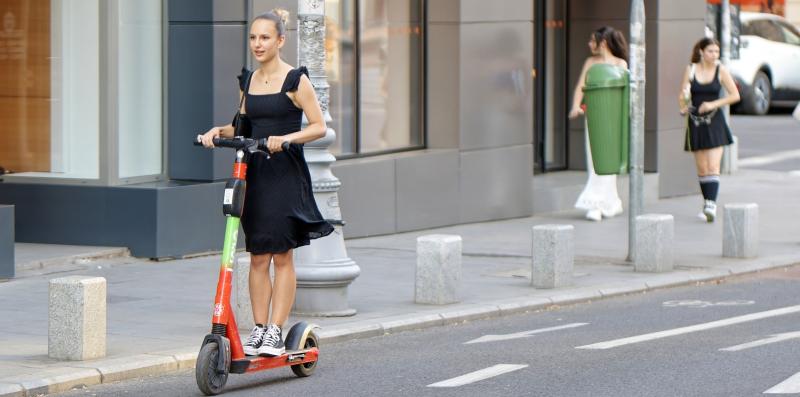Electric scooters are a popular, eco-friendly way to get around, but like any mode of transportation, they come with risks. Avoiding accidents on an electric scooter requires knowledge, preparation, and attention to safety. In this guide, we’ll cover practical safety tips to help you avoid common accidents, stay safe on the road, and enjoy your scooter rides with confidence.
Why Safety Matters When Riding an Electric Scooter
Electric scooters offer convenience and fun, but they can also lead to accidents if not handled carefully. Scooters can reach speeds of 15-20 mph, which increases the impact of any falls or collisions. By following basic safety practices and remaining alert, you can reduce your risk of accidents and protect yourself on the road.
Top Safety Tips to Avoid Electric Scooter Accidents
1. Wear a Helmet Every Time You Ride
Wearing a helmet is one of the simplest and most effective ways to protect yourself while riding an electric scooter. In case of an accident, a helmet can significantly reduce the risk of head injury:
- Choose a Certified Helmet: Look for a helmet that meets CPSC, EN 1078, or NTA 8776 standards, ensuring it’s tested for impact protection.
- Ensure a Proper Fit: The helmet should sit level on your head, with the straps snug but not tight. A well-fitted helmet offers maximum protection.
Pro tip: Choose a helmet with MIPS (Multi-directional Impact Protection System) technology for added protection against rotational impacts.
2. Follow Local Traffic Rules and Regulations
Following traffic rules is essential for staying safe on the road and avoiding accidents. Make sure you’re aware of local laws and regulations governing electric scooters in your area:
- Ride in Bike Lanes: Use bike lanes whenever possible to avoid mixing with faster-moving vehicle traffic.
- Obey Traffic Signals: Stop at red lights, yield at intersections, and follow all other traffic signals to stay predictable to other road users.
- Avoid Sidewalks: In most areas, riding on sidewalks is illegal and can be dangerous for pedestrians. Stick to bike lanes or designated scooter paths.
Best practice: Familiarize yourself with local scooter laws before riding to ensure you’re compliant and safe.
3. Inspect Your Scooter Before Every Ride
Before you hit the road, take a few minutes to check your scooter for any issues that might affect safety:
- Check Tire Pressure: Properly inflated tires provide better traction and reduce the risk of slipping or losing control.
- Test the Brakes: Ensure both front and rear brakes are responsive. Adjust or repair them if they feel loose or unresponsive.
- Examine the Battery: Make sure the battery is securely attached and fully charged. Avoid riding with a low battery, as it can affect performance and braking.
Pro tip: Keep a small toolkit with you for quick fixes if you encounter any issues on the road.
4. Maintain a Safe Speed
Speed is a major factor in many electric scooter accidents. To stay safe, keep your speed at a level you can easily control:
- Ride at a Comfortable Pace: Avoid pushing your scooter to its top speed, especially in crowded or unfamiliar areas.
- Slow Down for Turns: Reduce your speed when approaching turns, as high speeds can make it harder to navigate corners safely.
- Adapt to Road Conditions: Slow down on wet, uneven, or gravelly surfaces where you’re more likely to lose traction.
Best practice: Keep your speed within limits that allow you to stop or avoid obstacles safely.
5. Stay Alert and Minimize Distractions
Riding an electric scooter requires full attention to your surroundings. Distractions can increase your risk of accidents, so it’s important to stay focused:
- Avoid Using Your Phone: Never use your phone while riding. If you need directions, consider using a voice-guided GPS device in a secure mount.
- Be Aware of Other Road Users: Pay attention to pedestrians, cyclists, and vehicles around you, especially at intersections.
- Listen for Sounds: Avoid wearing headphones while riding, as they can drown out important sounds like car horns or approaching vehicles.
Pro tip: Keep both hands on the handlebars and stay fully focused on the road ahead.
6. Use Hand Signals to Communicate
Using hand signals helps other road users understand your intentions, reducing the risk of collisions:
- Left Turn Signal: Extend your left arm straight out to indicate a left turn.
- Right Turn Signal: Extend your left arm with your elbow bent upward to indicate a right turn.
- Slow Down Signal: Extend your left arm out with your palm facing down to signal that you’re slowing down.
Best practice: Make eye contact with drivers whenever possible to ensure they see and understand your signals.
7. Wear Bright and Reflective Clothing
Visibility is key to avoiding accidents, especially when riding at night or in low-light conditions:
- Wear Reflective Gear: Choose a reflective jacket, vest, or armbands to make yourself more visible to drivers.
- Equip Lights on Your Scooter: Use front and rear lights to improve visibility. A headlight helps you see the road, while a taillight makes you visible to vehicles from behind.
- Add Reflective Stickers: Attach reflective stickers to your scooter for extra visibility, especially on the sides and back.
Pro tip: Choose reflective gear that covers multiple areas, such as arms and torso, to ensure you’re visible from all angles.
8. Avoid Hazardous Road Conditions
Some road conditions pose a higher risk of accidents, especially for electric scooter riders. Here’s what to watch out for:
- Avoid Wet and Slippery Surfaces: Wet roads, metal surfaces, and painted lines can become slippery. Ride slowly and cautiously in rainy or wet conditions.
- Watch for Potholes: Potholes can cause you to lose control. Keep an eye on the road ahead and steer clear of any large cracks or holes.
- Stay Clear of Gravel and Loose Debris: Gravel, sand, and other loose materials can cause skidding. Avoid riding over these surfaces whenever possible.
Best practice: Plan routes that avoid hazardous areas or rough terrain to ensure a smoother and safer ride.
9. Avoid Riding Under the Influence
Riding an electric scooter requires full mental and physical alertness. Avoid using your scooter if you’ve consumed alcohol or drugs, as they impair judgment and reaction time:
- Plan Alternative Transportation: If you’ve been drinking, choose a safer transportation option like a rideshare or taxi.
- Avoid Prescription Medication: If you’re taking medication that causes drowsiness or impairs focus, avoid riding your scooter.
Safety tip: Never ride if you feel impaired in any way; the risks far outweigh any benefits.
10. Maintain a Safe Following Distance
Keeping a safe distance from other vehicles allows you more time to react to sudden stops or changes in traffic:
- Keep a 3-Second Buffer: Maintain at least a 3-second gap between you and the vehicle in front of you. This distance should be increased in wet or low-visibility conditions.
- Allow Extra Space for Buses and Trucks: Larger vehicles have larger blind spots and may stop abruptly. Give them extra space to avoid potential collisions.
Best practice: Constantly scan the road ahead and adjust your distance based on the speed and behavior of nearby vehicles.
Real-Life Example: Staying Safe on a Busy Commute
John, an electric scooter commuter in a busy city, follows these safety tips religiously. He wears a reflective jacket and helmet, uses hand signals to communicate, and avoids high speeds. By keeping his scooter well-maintained and planning his route through well-lit bike lanes, John stays safe and accident-free during his daily commute.
Conclusion: How to Avoid Electric Scooter Accidents – Safety Tips
Staying safe on an electric scooter requires a proactive approach to safety. By following these tips—wearing a helmet, obeying traffic rules, inspecting your scooter, and maintaining visibility—you can reduce the risk of accidents and ride with confidence. Always stay alert, anticipate hazards, and prioritize safety to make your electric scooter rides enjoyable and secure.



